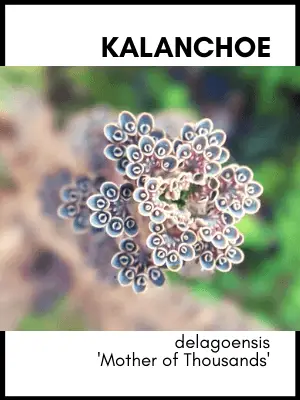Kalanchoe delagoensis, also known as Kalanchoe tubiflora and commonly called ‘Mother of Millions’ or ‘Chandelier Plant’, is a succulent plant species that belongs to the Crassulaceae family. Native to Madagascar, this plant is known for its trailing, tubular leaves and its ability to produce small plantlets along the edges of its leaves, giving it the common name ‘Mother of Millions’. In this blog post, we will take a closer look at the unique characteristics, care, and cultivation of this fascinating plant.
Description
Kalanchoe delagoensis ‘Mother of Millions’ is a robust, completely bare, biennial or more or less perennial, succulent plant that reaches heights of between 0.2 and 2 meters. The upright stems are simple and round. The three-seated, seemingly opposite or alternate leaves are usually upright to straight when spread out. They are slightly cylindrical, a little rutty on the top and reach a length of 1 to 13 centimeters with a diameter of 2 to 6 millimeters. The leaf blade narrowed at the base is reddish-green to gray-green with reddish brown spots. At the tip of the leaf margin, there are two to nine small teeth on which there are numerous brood buds.
‘Mother of Millions’ plant produces clusters of small, bell-shaped, tubular flowers in shades of gold/yellow, orange, and red/burgundy, which bloom in a dangling cluster at the top of stems. The inflorescence of the flower is showy and blooms in winter. The flower petals are 4-5 petals/rays and the flower size is 1-3 inches.
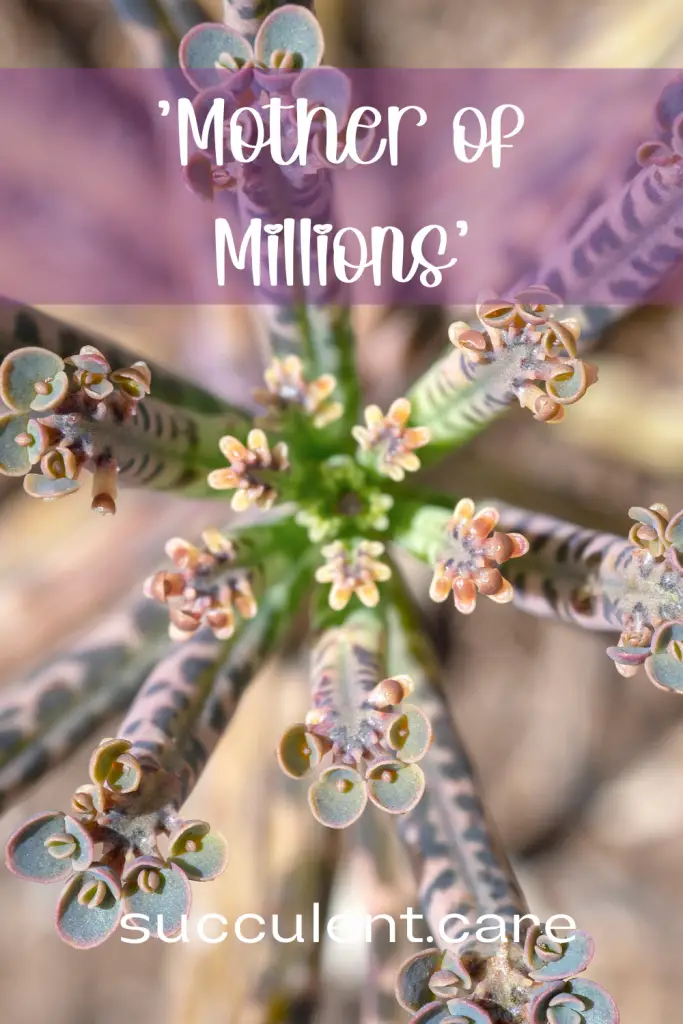
Light requirements
‘Mother of Millions’ prefers bright, indirect light but can tolerate some direct sun.
Temperature and humidity
Kalanchoe delagoensis ‘Mother of Millions’ prefers warm temperatures and low humidity.
Kalanchoe Care and Maintenance of ‘Mother of Millions’
Kalanchoe delagoensis ‘Mother of Millions’ is relatively easy to care for, but it does have some specific needs. Here’s what you need to know to keep your plant healthy:
Watering and fertilizing
Water sparingly, allowing the soil to dry out slightly between watering. Fertilize occasionally with a balanced, water-soluble fertilizer during the growing season.
How to Propagate ‘Mother of Millions’
All you need to do is carefully remove the small plantlets that form on the Mother of Millions leaves and place them gently on top of some potting soil. You can use a cactus soil mix, and the container doesn’t have to be super deep. Just make sure to keep the soil moist but not soaking wet, since Mother of Millions is a succulent and doesn’t need a ton of water. A sunny spot is perfect for your plantlets to grow.
As the plantlets grow, they’ll start to develop roots and that’s when it’s time to give them a little more room to breathe by replanting them in larger pots. And the best part? Mother of Millions is a tough cookie and is resistant to most pests and diseases, making it a great choice for both beginners and experienced growers alike.
Pests and Diseases
Kalanchoe delagoensis ‘Mother of Millions’ is generally pest-free, but it can be susceptible to mealybugs, spider mites, and scale insects. Overwatering or poor drainage can lead to root rot.
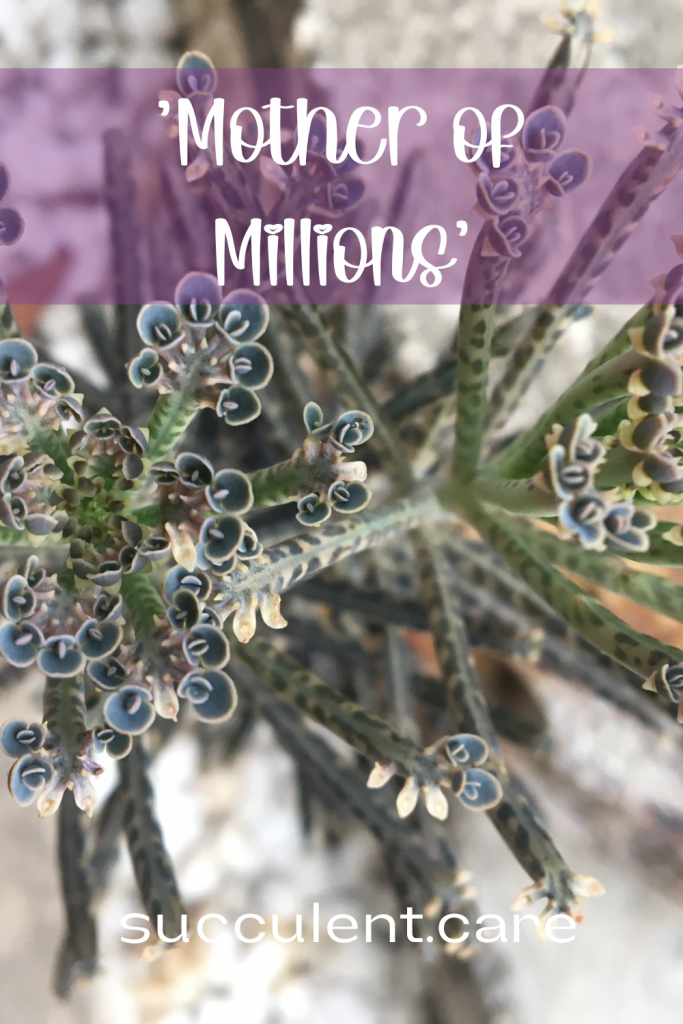
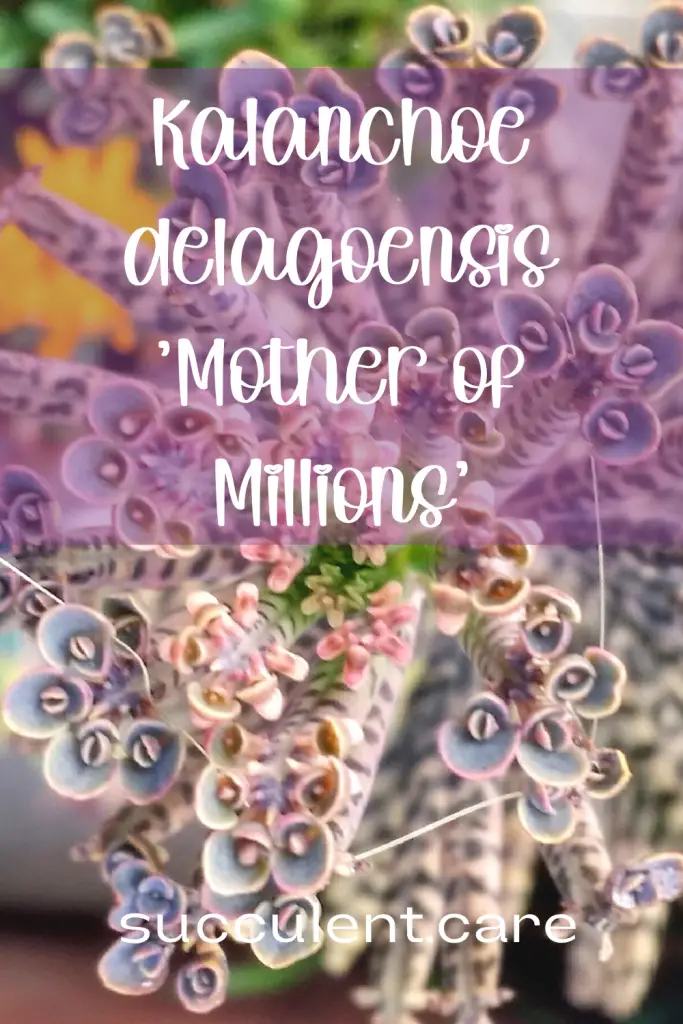
Special Kalanchoe Care Tips
Keep an eye on ‘Mother of Millions’ plantlets and remove them from the main plant if they are crowding the main plant or if you want to propagate them. Be aware that ‘Mother of Millions’ is considered an invasive species in some regions and might not be legal to grow in certain places, such as Australia where it is prohibited to sell or propagate this plant.
Hardy zones
Kalanchoe delagoensis ‘Mother of Millions’ is hardy in zones 9-11 and can be grown outdoors in these regions.
Cultivation
Kalanchoe delagoensis ‘Mother of Millions’ can be grown indoors in a sunny window or under artificial light, or in outdoor cultivation, In cooler climates, it should be grown as an annual or container plant. It is often used as a hanging plant or trailing plant in hanging baskets, containers, or as a groundcover.
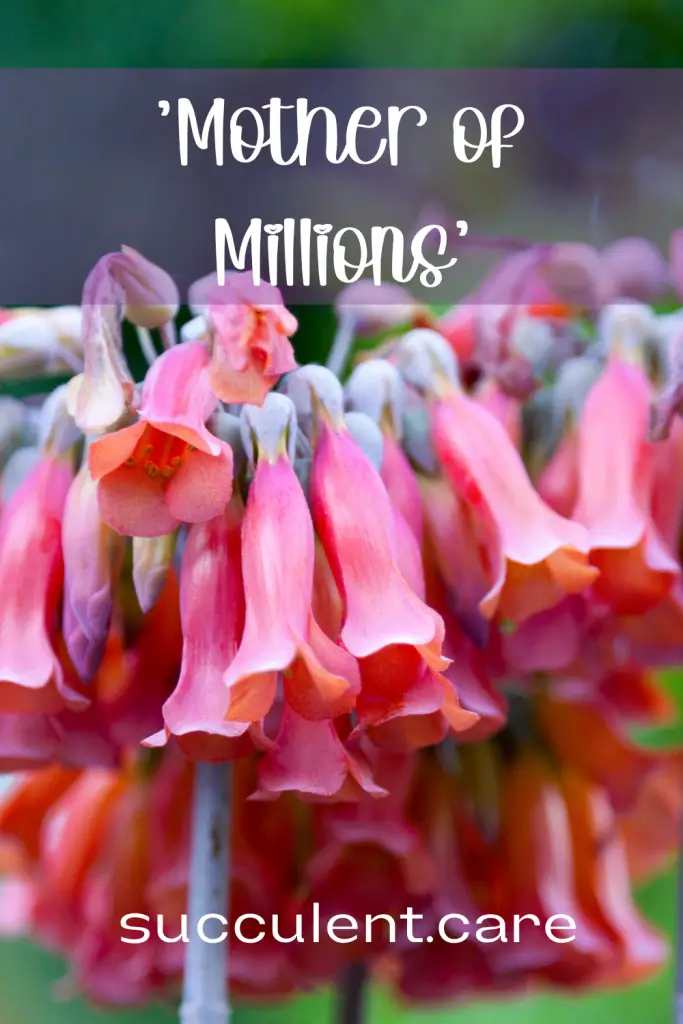
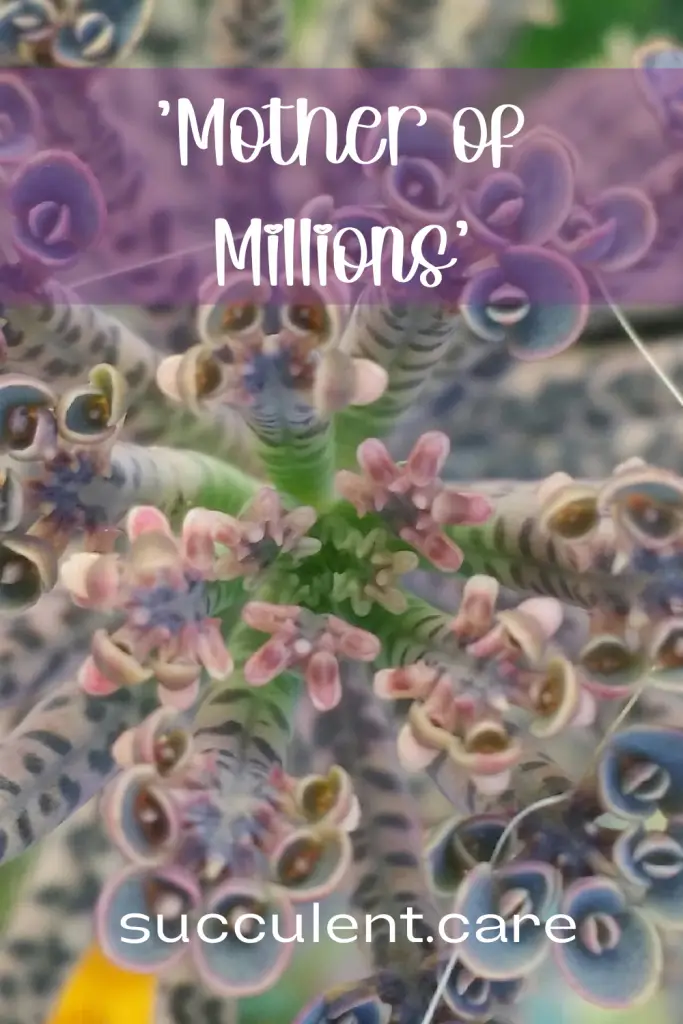
Invasive Species and Legal Status
‘Mother of Millions’ capability for vegetative reproduction, its drought tolerance, and popularity as a garden plant, make it an invasive weed in places such as eastern Australia, South Africa, and many Pacific islands. In these areas, it can displace native plants and contain bufadienolide cardiac glycosides which can cause fatal poisoning, particularly in grazing animals like cattle.
In the Australian states of New South Wales and Queensland, ‘Mother of Millions’ and its hybrids have been declared a noxious weed. It is important to be aware of the legal status of this plant in your area and to consider the potential negative impact it may have on local ecosystems before cultivating it.
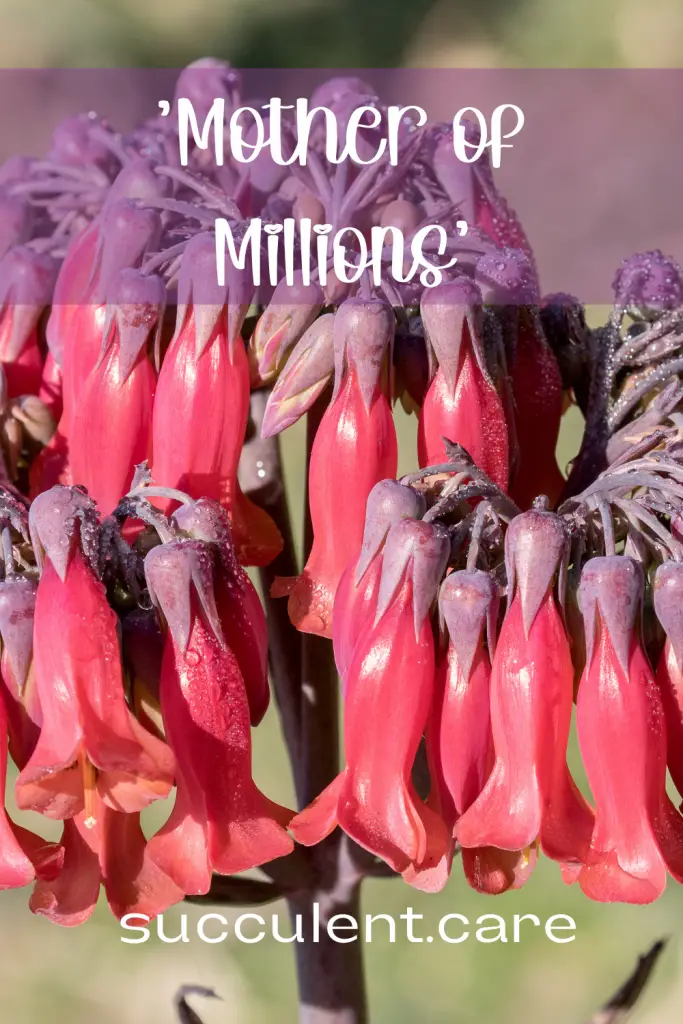
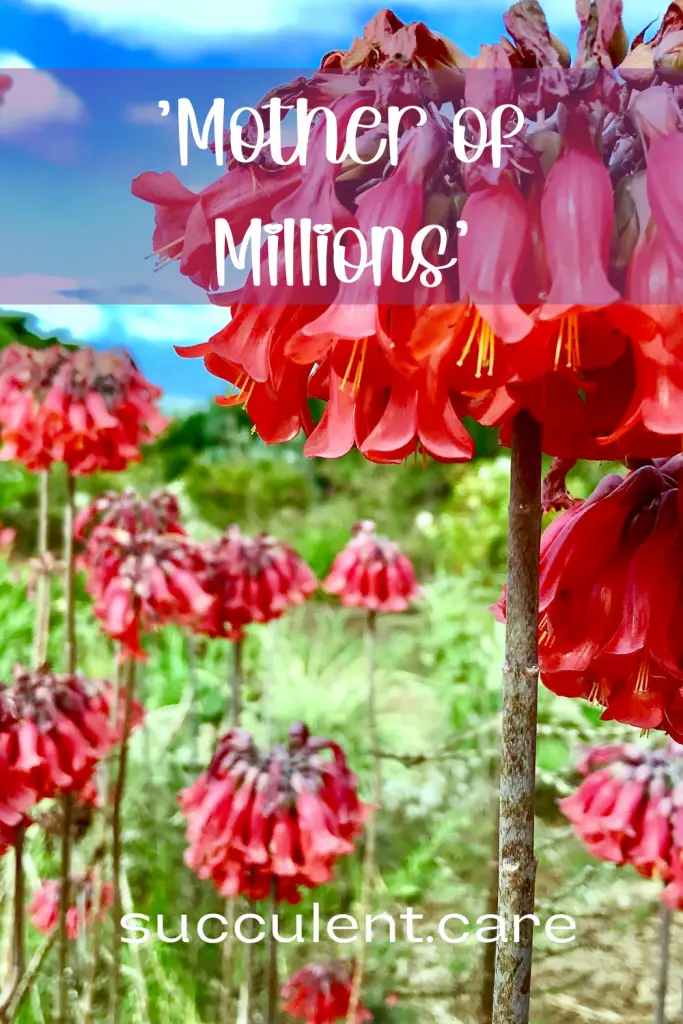
Kalanchoe delagoensis Care Conclusion
Kalanchoe delagoensis ‘Mother of Millions’ is a unique and fascinating plant species with many unique characteristics. It is easy to care for and propagate, but it is important to be aware of its invasive nature and legal status in your area. If you decide to grow Kalanchoe delagoensis ‘Mother of Millions’, be sure to keep an eye on the plantlets and remove them if they are becoming invasive. With proper care and attention, this plant can make a great addition to any garden or indoor collection.
Kalanchoe delagoensis ‘Mother of Millions’ Care Guide
Growing season:
Winter
Dormant season:
Summer
Quick Look at Kalanchoe delagoensis ‘Mother of Millions’
Hardy to USDA Zone: 10a- Size: Over 2 feet tall
- Foliage: Green/brown spotted
- Flower: Red/Orange
- Propagation: Stem cuttings, leaves, seed, offsets, viviparous (plantlets form on the leaf tips)
- Light: Full sun, bright shade
- Water: Drench & Dry
- Soil: Gritty, mostly inorganic, quickly draining
- Origin: Madagascar
About Kalanchoe delagoensis ‘Mother of Thousands’
Kalanchoe delagoensis AKA ‘Mother of Millions’ gets its name from the seemingly thousands of plants that form on the tips of the leaves. That’s called viviparous propagation.
Another nickname for Kalanchoe delagoensis is ‘Chandelier Plant’ because it grows straight up when given enough light.
in my garden, I have a couple that are well over 2 feet tall. In some parts of the world, they’re considered an invasive weed, but I have mine planted in the ground and only one other plant has formed from plantlets.

